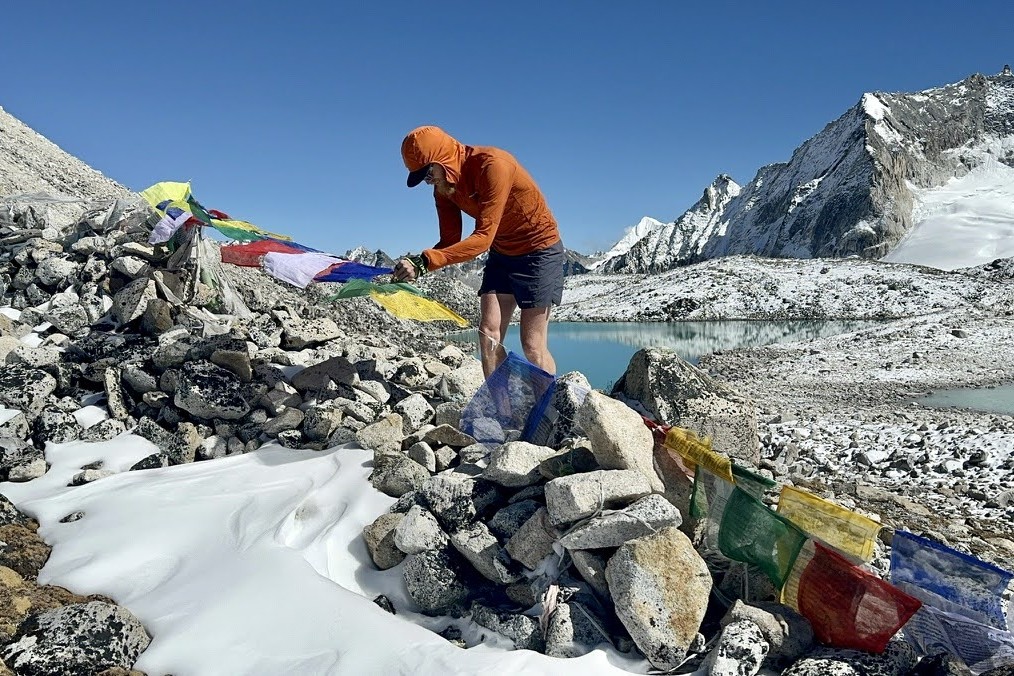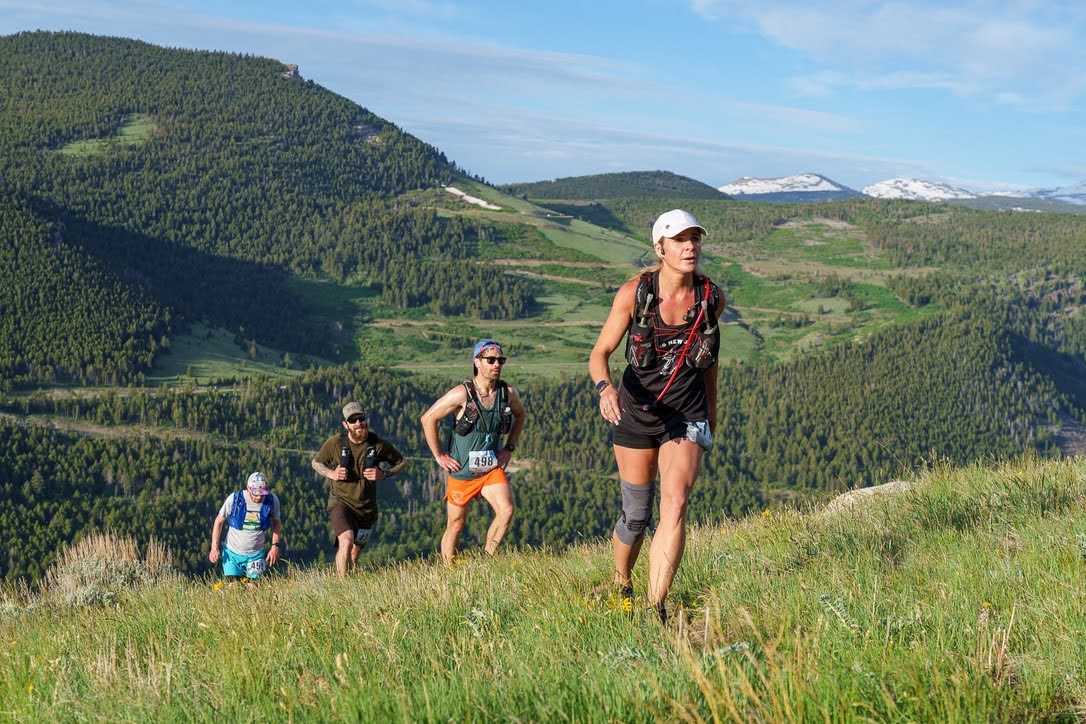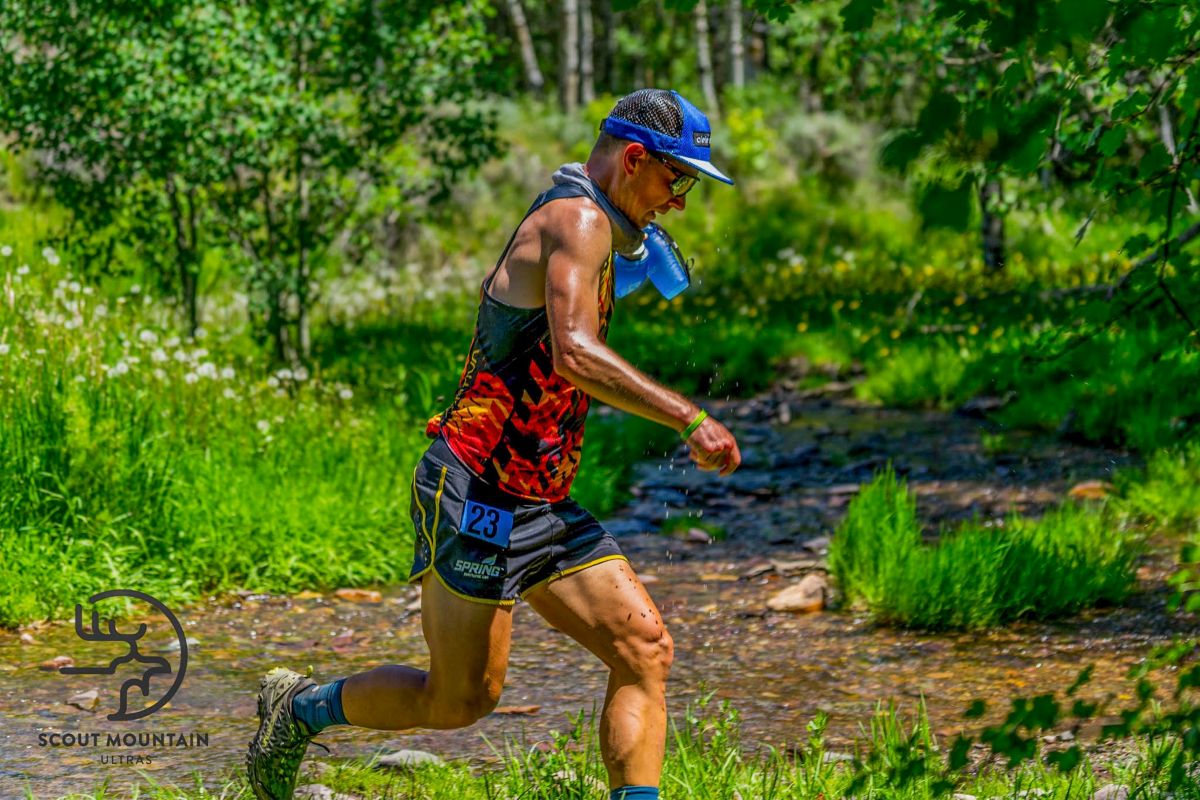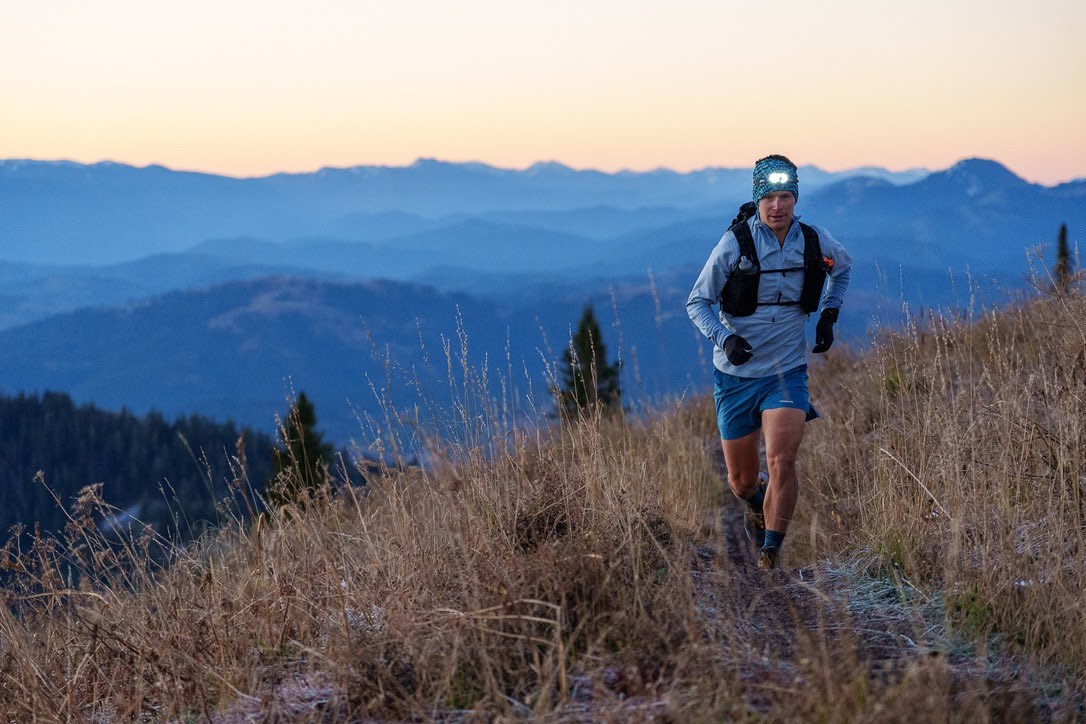In this monthly article series, ultrarunner, race director, and coach Gabe Joyes answers reader questions about anything and everything running. Learn more about this ask-the-athlete column, and be sure to fill out the form below to submit your questions for a future article!
In this article, Gabe answers questions about walking the climbs, running with joy, headlamp choices, and more.
Gabe’s Tip of the Month
When you are experiencing a low moment in a race or long training run, only say things to yourself that are 100% factual and completely avoid statements that are at all exaggerated — no drama. Here are a few examples:
Dramatic statement: “This climb is freakin’ NEVER ENDING!”
Factual statement: “This climb has been really long and still has 1,500 more feet to go.”
Dramatic statement: “I’m just suffering in this heat.”
Factual statement: “I am uncomfortably warm and should adjust my pacing and hydration plan.”
Dramatic statement: “If there is one more rocky descent, this course is going to kill me.”
Factual statement: “These rocky descents are really hard — it’s time to bring my A-Game.”
Let me know if sticking to the facts and avoiding drama helps you in your next XXL run!

Luke Nelson pausing for a moment at the Snowman Race to keep things positive. Photo courtesy of Gabe Joyes.
Growing Legs
How can I get my legs to be as big as yours!? :) Seriously though … tips and training suggestions for developing leg musculature and increasing fatigue resistance. Thanks! – Dexter Calhoun
The real question here, Dexter, is do you really want thigh muscles that big? I mean, the skinny jeans fad was basically a nightmare for me when it came to buying pants. Also, it is noteworthy that a truly wonderful aspect of trail running and ultrarunning is that I have seen people of nearly every shape and size on the podium of races, and there is no specific size or shape that guarantees success.
That being said, muscular endurance certainly is a real thing and is helpful for all ultra distance events, but particularly ones that involve more climbing, descending, and lateral “mountain movement.” I periodize strength training into the colder months of the year, and generally spend 45 minutes in the gym once or twice per week. It is probably noteworthy that I did play college soccer and spent a lot of time in the gym back in those days.
Wall sits are a great exercise to improve muscular endurance — and mental patience as well — as you are literally just holding your quads in that locked position. Single-leg plyometric hopping exercises are also excellent for keeping the muscles firing while also massively improving balance and stability.
Walk or Run?
Do you run or walk the first hills of an ultra? – JMJ
No one wins an ultra on the first climb, but you can definitely lose an ultra on the first climb.
Pacing ourselves at the beginning of a race might be one of the most difficult things to do in trail running. I mean, you’re probably very fit, well trained, filled with stoke and adrenaline, well fueled, and even the temperatures are likely cooler. It is so easy to just hammer while humoring ourselves, “I’m starting at a comfortable pace!” I try to be honest with myself, and as I ascend the first climb, I ask myself, “Will I be running this sort of incline at mile 30? Fifty? Or even 80?”
If running a climb truly feels comfortable then I think it is the prudent thing to do, but if we run climbs that are at the upper end of our fitness early on in a race that usually does not play out too well later.
That being said, I do take into account the elevation profile of the event, and think about balancing out muscular fatigue. For example, if the course is mostly runnable, but starts with one big beastly climb, I’ll hike basically every step of the climb because I know there is plenty of running to do later. If the race is constantly up and down, I’ll try and alternate between hiking and running as frequently as I can to try and delay any one muscle group getting totally worn out.

Runners pacing themselves well up the first climb of Sinks Canyon Trail Races. Photo: Fred Marmsater
Headlamp Dilemmas
Wondering about lighting logistics for 100 milers: What headlamp do you use? Do you use a waist lamp also? Do you carry spare batteries for headlamps or just leave additional headlamps in drop bags? – Amy
Lighting improvements have come amazingly far over the last decade! I used to try and wait as long as possible to turn on my headlamp in 100 milers, but after simultaneously falling and nearly wrecking an ankle during the dusky hours of a race, I came to the conclusion that running with low visibility when you are already really tired is a bit stupid. I like to keep my lighting setup simple and light. I primarily use one bright headlamp — my choice these days is the Petzl Nao RL — and usually I carry a very small backup headlamp with me as well – Petzl Bindi. If there is significant time between aid stations or temperatures are on the chilly side, as cold weather adversely impacts battery life, I will sometimes carry a spare battery as well.
Brighter headlamps are helpful for staying awake, but there is no need to go overboard and blind your competition — or anyone else. When I was in the second night of running the Wind River High Route, I had a moment where I was certain I was staring at an elk that had Christmas tree lights stuck in its antlers. As I got closer to examine this jolly creature, I realized it was actually a tent with reflective guy lines containing a very confused and grumpy backpacker that I disturbed at 3 a.m.
A word of caution on waist lights if you are the type of person that is prone to swelling and bloating in long races. You know how you squeeze the last drop of toothpaste out of a tube with your hands? Anything tight around your waist can have the same effect on your lower gastrointestinal tract, which is highly unpleasant.
Racing With Joy
Congratulations on your recent finish at Hardrock! I think that was not the race day you were hoping for, but you still exuded so much joy. Can you share about the racing mental mindset of someone like yourself on a day like this? – Greg
You are correct Greg, I was certainly fit enough for, and aiming, for a faster time and place — but still had a mind blowingly positive experience. There was something about the community at Hardrock this year where I just felt so much energy and stoke from every volunteer, spectator, and especially my crew. It was like everyone knew the conditions were unusually challenging and racers were struggling, but because this race is such a special privilege and rare opportunity, there is an obligation to make the most out of it — no matter what.
DNFing crossed my mind once in my lowest of low points ascending Camp Bird Road, and I literally laughed at the idea. Long after my pace goals were gone, I still kept pushing as hard as I possibly could, even though I had no idea what place I was in. The will of the whole community for every runner to make the absolute most of the chance to race Hardrock was overwhelming in the most wonderful way, and it made going deep a natural and relatively easy thing to do.
Submit Your Questions
Send us your questions! Use the form below or send us a message on Instagram, and we’ll consider your questions for future articles.
Call for Comments
- What do you think of Gabe’s answers to this month’s questions?
- What other questions do you have for Gabe? Send them our way!



